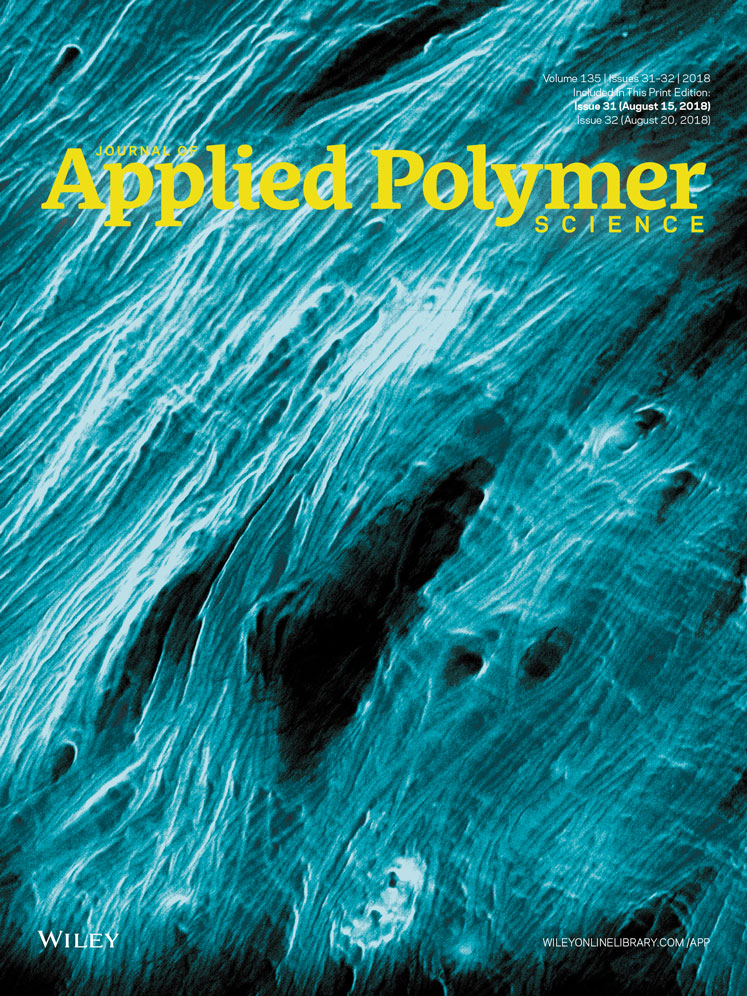Mechanical and piezo-resistive properties of styrene–butadiene–styrene copolymer covalently modified with graphene/styrene–butadiene–styrene composites
ABSTRACT
As novel piezoelectric materials, carbon-reinforced polymer composites exhibit excellent piezoelectric properties and flexibility. In this study, we used a styrene–butadiene–styrene triblock copolymer covalently grafted with graphene (SBS-g-RGO) to prepare SBS-g-RGO/styrene–butadiene–styrene (SBS) composites to enhance the organic solubility of graphene sheets and its dispersion in composites. Once exfoliated from natural graphite, graphene oxide was chemically modified with 1,6-hexanediamine to functionalize with amino groups (GO–NH2), and this was followed by reduction with hydrazine [amine-functionalized graphene oxide (RGO–NH2)]. SBS-g-RGO was finally obtained by the reaction of RGO–NH2 and maleic anhydride grafted SBS. After that, X-ray diffraction, X-ray photoelectron spectroscopy, Raman spectroscopy, scanning electron microscopy, transmission electron microscopy, thermogravimetric analysis, and other methods were applied to characterize SBS-g-RGO. The results indicate that the SBS molecules were grafted onto the graphene sheets by covalent bonds, and SBS-g-RGO was dispersed well. In addition, the mechanical and electrical conductivity properties of the SBS-g-RGO/SBS composites showed significant improvements because of the excellent interfacial interactions and homogeneous dispersion of SBS-g-RGO in SBS. Moreover, the composites exhibited remarkable piezo resistivity under vertical compression and great repeatability after 10 compression cycles; thus, the composites have the potential to be applied in sensor production. © 2018 Wiley Periodicals, Inc. J. Appl. Polym. Sci. 2018, 135, 46568.




